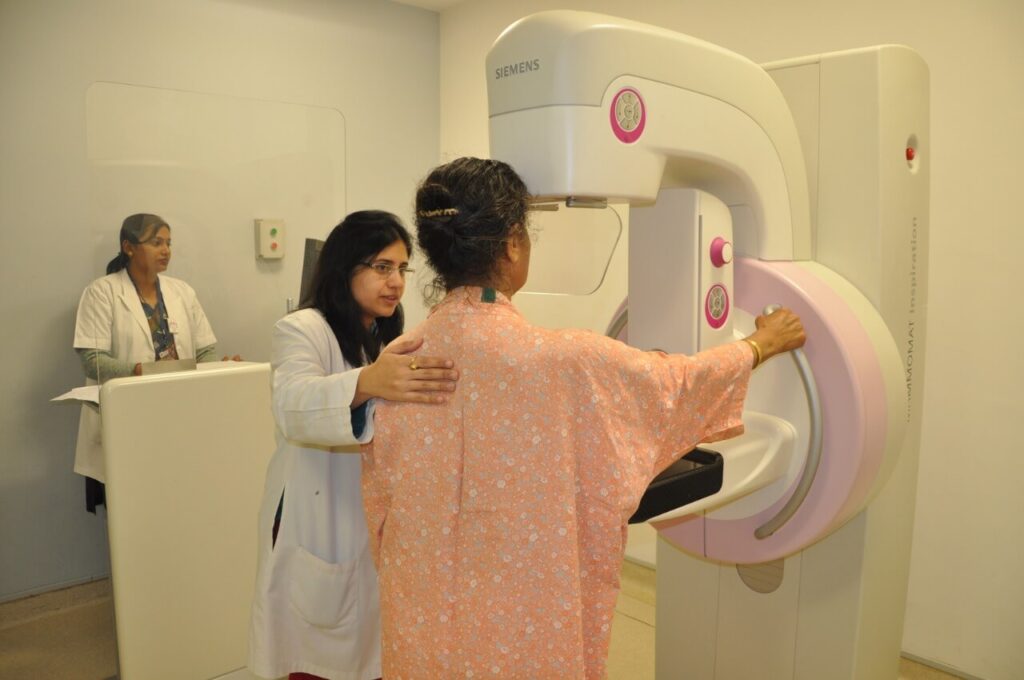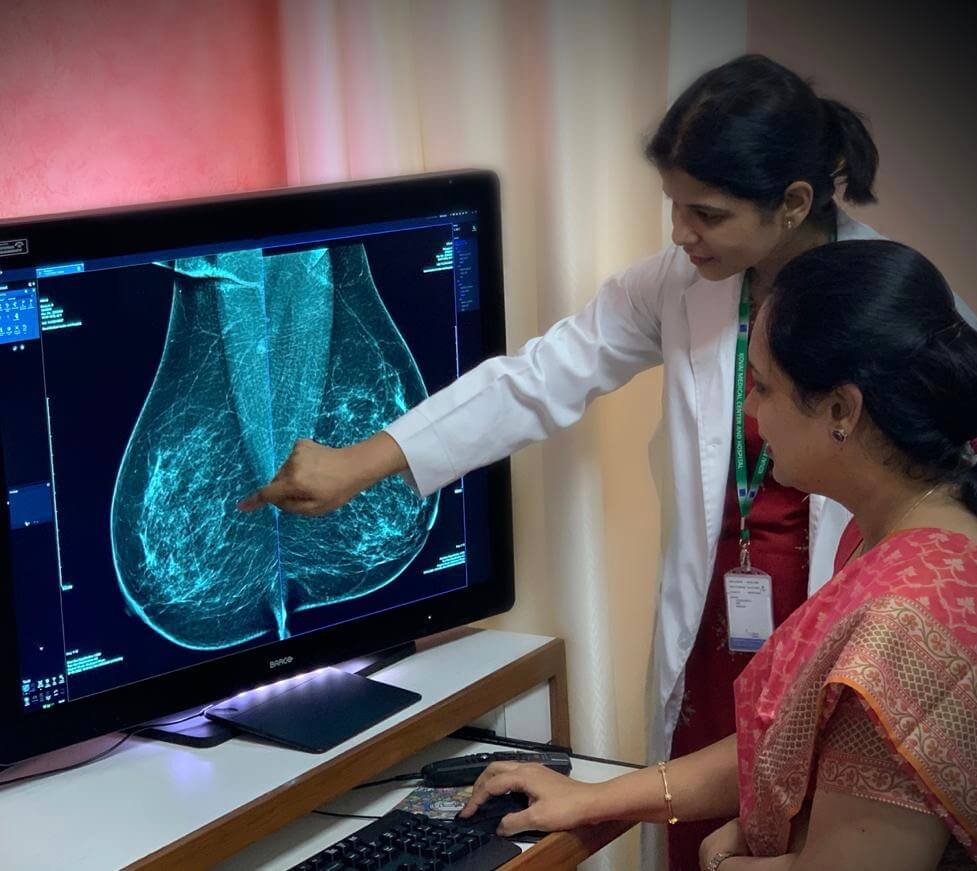What is 3-D Mammography (3D Tomography)?
Three dimensional (3-D) mammography, also known as digital breast tomosynthesis, is a type of digital mammography in which low dose x-rays are used to capture images of the breast from different angles and then with the help of computer software, this data is reconstructed into images of slices through the breast thickness. It is similar to how the compute tomography (CT) scanner is used to create images through the body.
It also utilises low dose x-rays , however, till date, its use is recommended only along with the standard 2-D digital mammography, so that the cumulative dose is higher compared to the 2-D mammography done alone but it is still within the accepted limits. Currently, the studies and researches are going on to replace the 2 D mammograms with the synthesized 2D digital mammograms obtained from the tomosynthesis data. This will help in lowering down the radiation dose.



